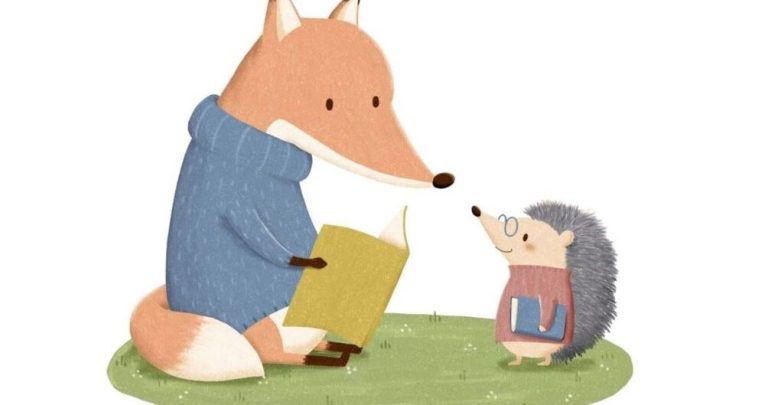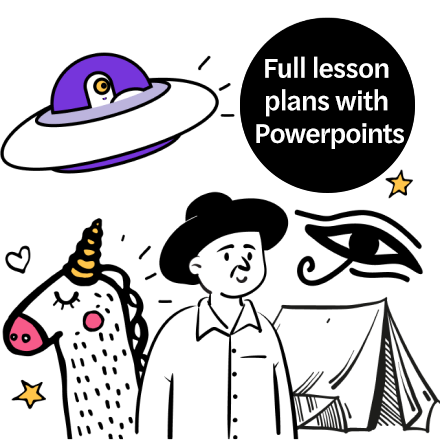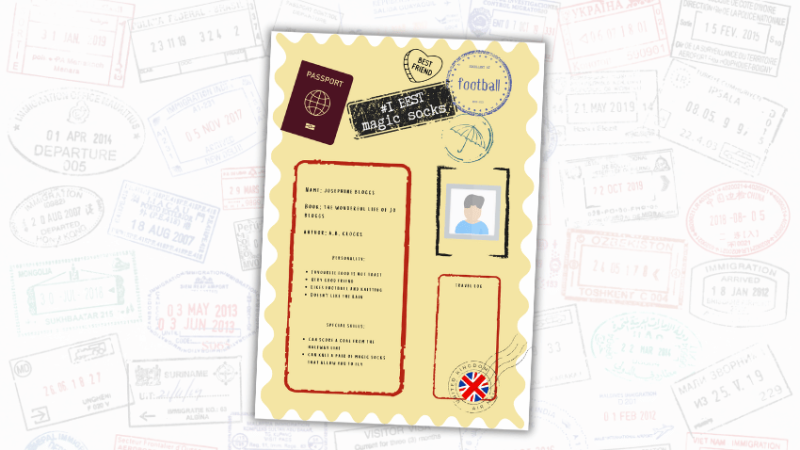Talk for Reading – a how-to

Strategy, drama, and investigation – Pie Corbett introduces a new approach to books, and how you can use it in your classroom

- by Pie Corbett
- Inspirational trainer, poet, author and editor of over 250 books Visit website

Apart from developing kindness, reading is the most important part of the curriculum, as it opens up the world for children, giving access to information, ideas and stories about the human condition.
Reading is an extraordinary form of abstract thinking in words, images and feelings. Potentially, it provides a lifetime of enrichment that binds us all together as one human race. Everyone loves a good story.
With this in mind, we spent six years developing Talk for Reading. We worked with schools that have high attainment, despite serving challenging areas, to figure out what they were doing that was so effective. It focuses on three core aspects: a. A very positive reading culture;
b. Highly effective teaching of phonics and fluency;
c. Successful teaching of vocabulary and comprehension.
Here’s how they work…
Pie Corbett Reading Spine
Effective schools loiter with great books and texts. Once a child has spent time with Anthony Browne’s Voices in the Park, for example, working for a week or so considering the four characters’ viewpoints, the book becomes a frame of reference for exploration of other narratives. This enables pupils to discuss how texts can be seen from the author’s viewpoint, the narrator’s, and different characters’, as well as how different readers might view a text.
Familiarity with great books provides core book knowledge. This is the school’s Reading Spine; a mapped-out book curriculum that provides the basic entitlement to experience great literature (narrative, nonfiction and poetry).
Picturebooks
Picture books can be an ideal place to begin to develop deep thinking about texts. Because words are accompanied by images, everyone will have something to say. Pictures make it seem simpler and so children gain confidence. I would suggest starting with:
- Voices in the Park by Anthony Browne
- I’ll take you to Mrs Cole by Nigel Gray
- The Arrival by Shaun Tan
Reading strategically
This is not the same as ‘doing strategies’ whether the text needs them or not! Pupils should learn how to tackle different texts efficiently alongside what to do if they start to lose the meaning.
So, reading a nonfiction book to discover information involves a different strategic approach to reading a short story or poem. Generally, losing the thread of a text is addressed by slowing down, rereading, trying to extract the key idea or action, and perhaps making notes to clarify what is happening before summarising.
Nonfiction, however, involves skimming, scanning, and using an index or glossary.
Text choice
The approach to teaching depends on selecting a worthwhile, challenging text. If the children can already read and understand a book, then nothing new will be learned. The movement from dependence to independence stretches across three phases:
- Introduction – read the text aloud fluently a number of times and ask the children to share first responses and ideas. Carry out initial work on vocabulary so that soon everyone can reread the text with basic understanding.
- Investigation – increasingly dig deeper, usually with a core focus based on a relevant literary concept. Use teaching approaches such as reading aloud, sentence-by-sentence, close reading, drama, writing in the style and summarising. By the end of this phase everyone should be able to read the text fluently with understanding.
- Independent application – finally, this involves children demonstrating what they have learned. This may be writing something similar, writing about their reading discursively, answering questions, or applying what they have learned to another text.
Provide reading vocabulary
The main focus is on oral comprehension, sometimes leading into writing. Depending on the focus, you can provide the core vocabulary and sentence stems that might be useful.
For instance, when discussing character, provide words such as character, hero/ine, protagonist, supporting characters, inner thoughts, speech, action, reaction, motivation, description; give pupils key words to describe personality such as brave, bold, calm, shy, angry, humble, etc, alongside the core vocabulary; and provide relevant sentence stems such as ‘The way the character behaves suggests that…’; and ‘This provides an insight into…’.
Core teaching approaches
Dialogic comprehension is an opportunity for the children to share and discuss their ideas as a group or class. Prompt their discussion, listening to responses and challenging as necessary.
This is NOT about questioning children to test comprehension. When such discussions are effective, everyone deepens their comprehension and the possibilities that the text offers. The rules for such discussions are:
- All contributions are listened to and given serious consideration
- Everyone should ‘have a go’
- Be ready to change your mind
- Listen to each other
- It helps to be tentative
Training the children how to have a good discussion also involves developing the following approaches. They should be ready to:
- Suggest a new idea – I think… because…
- Challenge – I’d like to challenge Jenny…
- Build on an idea – I’d like to build on Raj’s idea…
- Explain – Can Kabir explain why… I think I can explain why…
- Question – We were wondering whether…
- Justify – The author states that… I think that… because the author…
Talk aloud – model being a reader out loud, to reveal the thought processes that happen as we read. These might be very general, but it is most effective when you focus on the key concept being explored, e.g. talking about the characters and picking up on what the text suggests or reveals.
Sentence-by-sentence reading slows the text right down and allows you to demonstrate how to tie ideas together rather than skimming the surface. Model the way in which the text works before the children work in pairs using the same strategy.
Questioning – this might arise from you or the children. The most powerful questions are usually open-ended and lead into a meaty discussion based on careful rereading of the text. They could be built around literary concepts, e.g. What is your impression of the author’s viewpoint of the subject? Is the author biased and how do we know? How does the character’s emotional journey through the text link to the theme of sacrifice? Drama – use this to deepen and strengthen emotional engagement with the text. This might involve hot seating, freeze frame, and re-enacting a scene or interviews by journalists about key events. It can be helpful to use ‘one minute drama’ whereby the children perhaps say a sentence aloud with emotion, provide an action for a sentence, mime a section, chat with a partner in-role as characters, or conduct a phone call in-role about a key event.
Reading as a writer – once the children have a good understanding of the text, the class can consider how the author created certain effects. For instance, we might be thinking about how a persuasive argument is structured and how the key points have been made so persuasive.
Writing in the style – use the text as a model so that the children have the chance to try out the techniques used by the writer.
Pie Corbett is an education consultant, poet and author known for Talk for Writing. Talk for Reading is available at tinyurl.com/tp-TalkForReading







